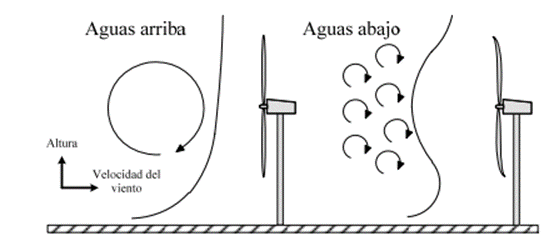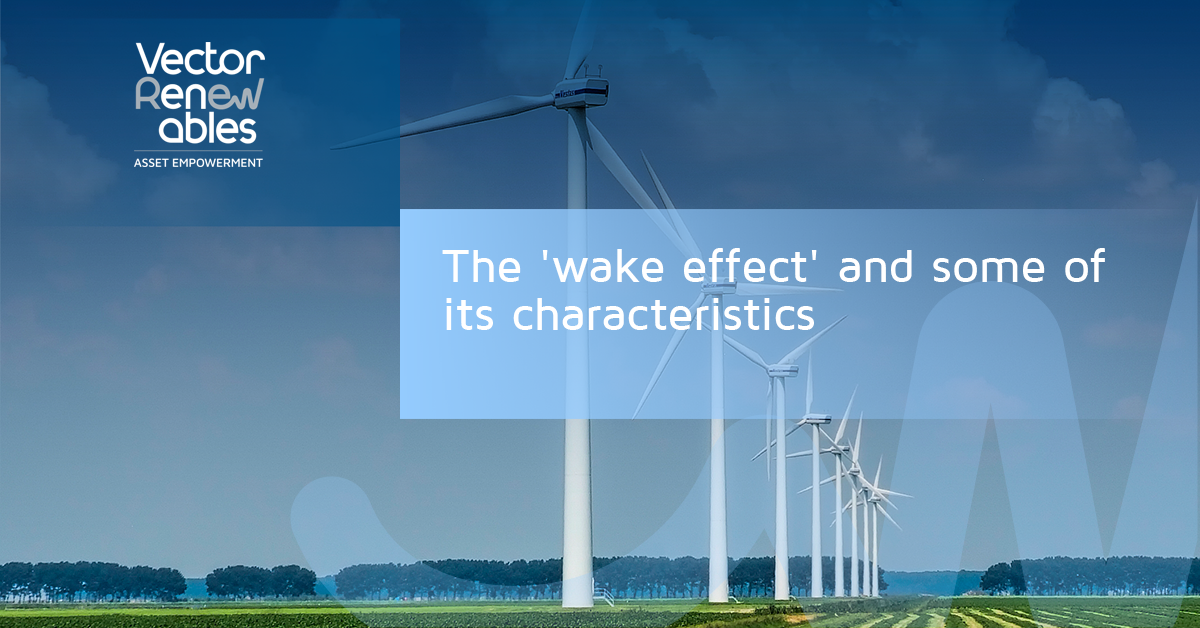Do you know what the 'wake effect' is in a wind farm?
Just as a ship can be placed upwind of another and leave it without wind, wind turbines located in a certain way can affect others in the production of energy. Today we tell you about the characteristics of this reality that engineers deal with every day in the design and construction phases of a wind farm.
What is the 'wake effect'?
The 'wake effect' is the trail left by each turbine where wind speeds are reduced. The wind regime generates additional turbulence to that already produced by the terrain, affecting nearby wind turbines and even neighboring wind farms. This is an important factor that must be taken into account in the design and construction phase of a wind farm to avoid possible deviations in production, both for each individual generator and for the wind farm as a whole.
The regions where the 'wake effect' is observed are normally two.
- The first refers to the air flow in the area immediately upstream of the rotor of a wind turbine.
- The second is in a 'downstream' region far from the location of the turbine, where the wind speed is reduced, causing the turbines located in that space, a decrease in energy production.

The attached image shows the interaction of the wake with the ambient wind flow.
What factors produce the 'wake effect' in a wind farm?
To understand this question, we must first of all consider how far away the wind turbines have to be positioned in order to maximize their performance.
Until now, at least in Spain, the distances between wind turbines were not considered from an environmental point of view, but only in terms of production.
However, in recent years and with the advent of environmental and ESG policies, the regulation in Spain has included some criteria to reduce the environmental impact of onshore wind generation. Thus, we can say that, currently, there is not only a single correct distance between wind turbines, but there are several applications in the positioning of the same for each environment, taking into account both the production and the visual impact on the landscape.
If we talk in terms of production or efficiency, we must consider the general standards in which it is recommended to position a wind turbine with respect to another. Thus, taking into account the predominant wind directions, turbines should be spaced between 5-8 rotor diameters apart. While, for non-predominant wind directions, the distance should be between 2-4 rotor diameters.
Understanding the type of air that the turbine is confronted with is decisive when talking about production. On the one hand, we distinguish laminar flow, in which the particles move in a parallel and orderly manner, and turbulent flow in which these particles are chaotic and disorderly. The most suitable type of air for wind turbines is laminar and what lowers the productivity of these will be the wakes caused by other wind turbines that slow down the wind, thus creating extra turbulence and therefore a loss in air quality.
Some measures to avoid the 'wake effect' in a wind farm
- Making a detailed study with measurements at the site and the choice of a suitable wake calculation model taking into account the orographic, thermal and wind regime conditions.
- Taking into account the thrust coefficient (TC) of the wind turbines to be studied, since the wake calculation depends directly on this factor.
- Evaluating the distances between wind turbines depending on the type of wind farm in which to position the turbines.
- In already installed wind farms, the effect can be mitigated through software that changes the orientation of the turbine depending on the tupe of wind
Vector Renewables has a team specialized in wind projects that has accumulated more than 30 GW in the provision of technical services in this technology. If you need advice for your renewable energy projects, do not hesitate to contact us.
When you subscribe to the blog, we will send you an e-mail when there are new updates on the site so you wouldn't miss them.

